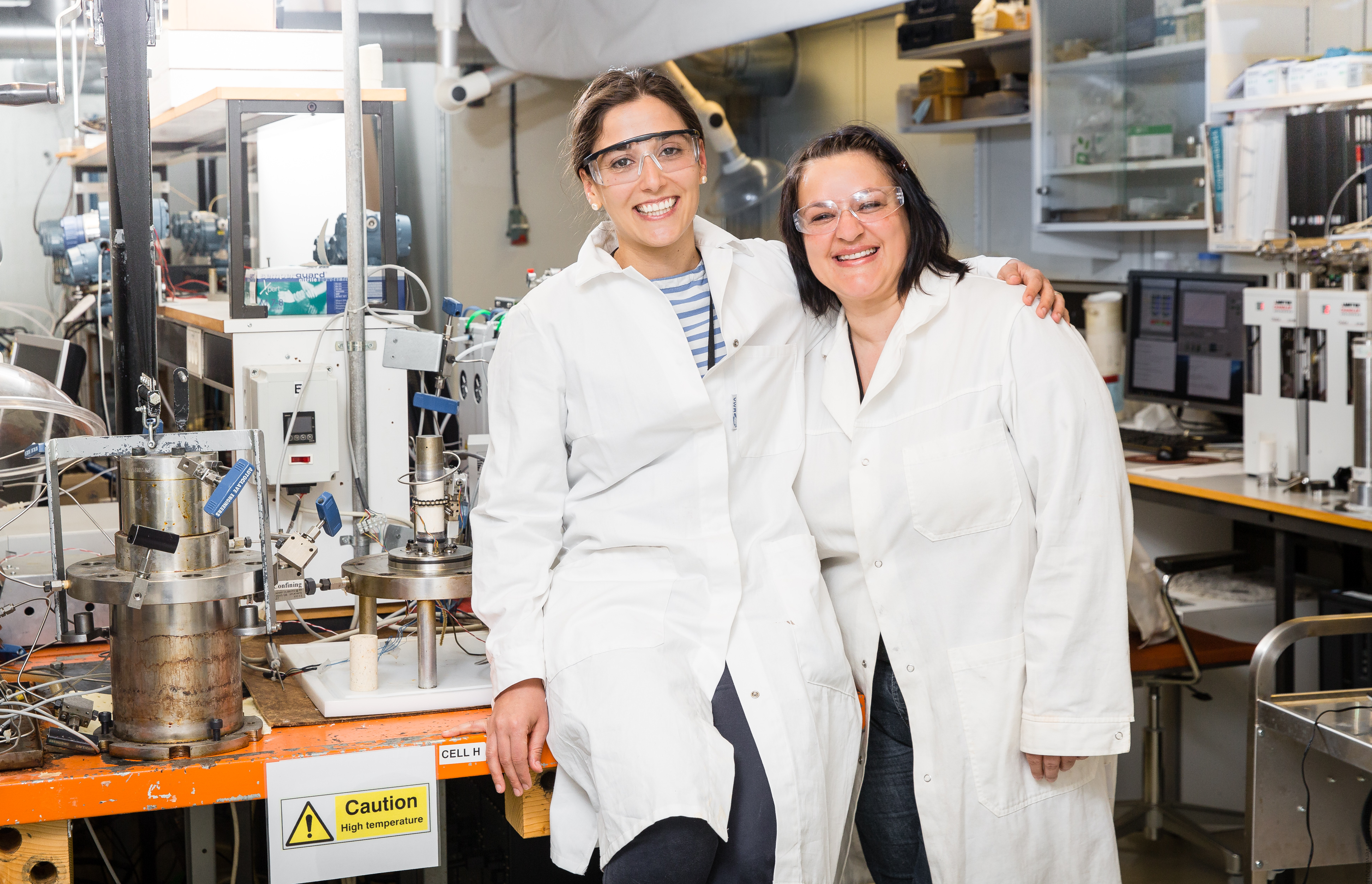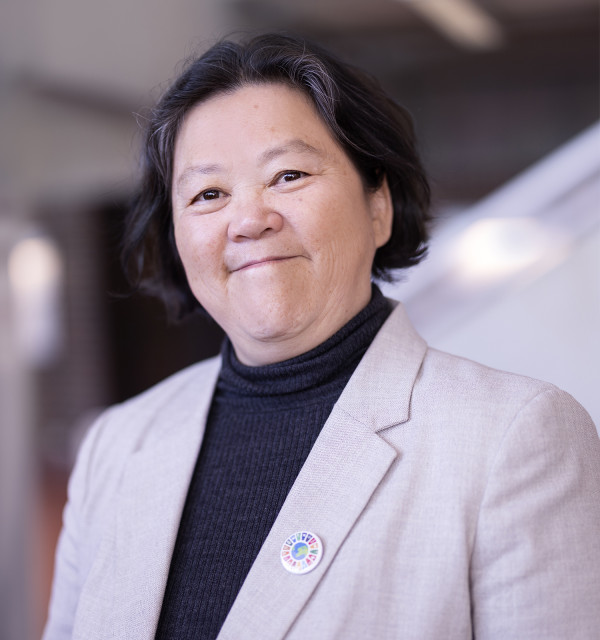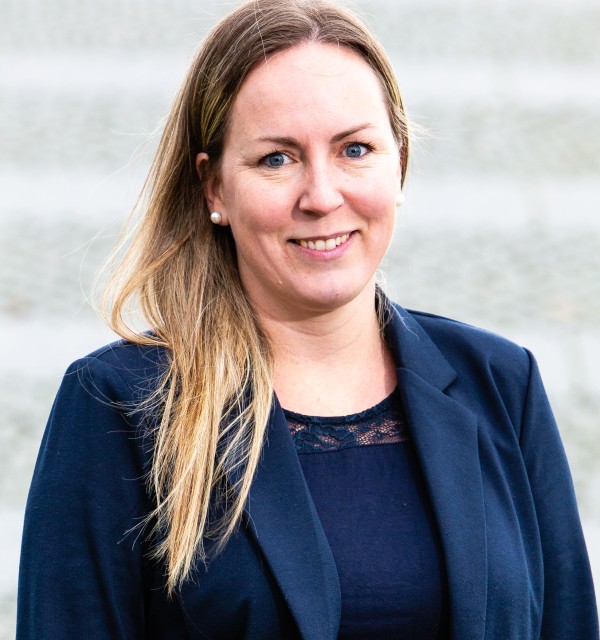Eight years of research on improved oil recovery are coming to an end. In this article you get the highlights from the research at The National IOR Centre of Norway.

In December 2013, the University of Stavanger (UiS), together with its research partners NORCE and IFE, was awarded The National IOR Centre of Norway. The Centre's goal has been to improve oil recovery on the Norwegian shelf. The word "improve" is not only referring to increased recovery, but also to minimizing the environmental risk – getting more oil from existing, mature fields and not necessarily developing new fields. For both existing fields and new fields that have not yet been put into production, it is important to make the best decisions and choose the best methods to improve oil recovery.
"These eight years have given us enormous opportunities to build our competence and knowledge. The time at the IOR Centre forms the basis for continuing the work," says centre manager Ying Guo. She took over as manager after Merete Vadla Madland in September 2019. The rest of the management group consists of Tina Puntervold (deputy manager and leader of theme 1), Randi Valestrand (leader of theme 2), Aksel Hiorth (research director) and Sissel Opsahl Viig (director of field implementation).
The Department of Energy Resources and the Department of Energy and Petroleum Engineering at the University of Stavanger, together with the energy groups at NORCE and IFE, are among the leading institutions in their field. Over the last 40 years, UiS has built up a strong professional environment within improved oil recovery. The main task is to develop new and environmentally friendly technology. This was also the mandate given to the IOR Centre when the Research Council of Norway announced UiS as host of the Centre eight years ago. The IOR Centre should contribute with innovation and new technology that benefits both the nation and the environment.
What have we accomplished?
Extracting more oil from old fields requires a lot of energy. Therefore, our researchers have developed new methods and tools to improve the recovery rate. At the bottom of this article you will find a list of highlights from the research at the Centre. The list includes simulation tools and software that are already in use by several of our nine industry partners.
"Through the research, the IOR Centre will contribute to better recovery on the Norwegian shelf, but we will also contribute to Norway being equipped for a more sustainable future. Our expertise is relevant not just for increased oil recovery. We also produce technology that becomes crucial the day the oil is phased out," says associate professor Tina Puntervold.
The Norwegian Petroleum Directorate has mapped a technical potential for significant amounts of oil and gas from mature fields on the Norwegian shelf. By using advanced methods for increased recovery, it is possible to extract in the order of 320-860 million standard cubic meters of oil. In addition, there are significant amounts of oil and gas in dense reservoirs that can be extracted by using new technology.
"Our mandate has been to conduct research on improved recovery for the years to come. Through better methods, we can contribute to as gentle and energy-efficient oil recovery as possible," says Puntervold.
From lab to field
For many years, it has been a political goal to increase the recovery rate. This is also a high priority for the government, which has a stated goal of extracting more of the resources in each field. The Norwegian Petroleum Directorate mentions increased recovery as one of its flagship issues.
"The IOR Centre has contributed to increased and improved production on the Norwegian shelf, among other things by means of new simulation tools. One of the goals of our research is to scale up the recovery mechanism observed on the pore and core scale to field scale. We have developed four simulation tools that can all help maximize the recovery rate," says Tina Puntervold.
She also highlights the new tracers developed at IFE (Institute for Energy Technology).
"The tracers can, among other things, measure the oil saturation in the field there and then. Instead of taking samples from a field, and then sending them for analysis in a laboratory, you get direct measurements from the field. The analyzes are adapted to the exact conditions in the fields," she says.
Increased value creation
Last year, Rystad Energy published a report showing the potential and realized effects of the Research Council's investments in petroleum of approximately NOK 4.8 billion in the period 2008 to 2018. The Research Council has invested NOK 80 million in the IOR Centre.
According to the report, the Research Council's petro centers and Petromaks projects have led to increased reserve volumes of almost 900 million barrels of oil equivalents in the period 2008-2018, with a further volume upside of 11 billion barrels until 2050. The investments have also resulted in cost savings of NOK 18 billion. The potential for further savings is 1200 billion. At the same time, the potential for further emission reductions is great.
The realized volume gains relate, among other things, to advanced methods for reservoir understanding and increased recovery, and in particular the development and use of so-called Ensemble Kalman Filter methodology (EnKF), the report states.
"This methodology is an important part of the research at the Centre. It is a set of statistical tools that enable more efficient use of the oil companies' software in reservoir modeling and simulation. The purpose is to make better decisions in drilling and drainage strategy," Puntervold explains.
EnKF technology is estimated to account for more than half of the technology area's realized reserve increase of 540 million barrels of oil equivalents, according to the report from Rystad Energy.
What's next?
Together with partners NORCE and IFE, UiS has applied for a new petro center. Also on the team is the University of Bergen. The new center has been named NCS2030 (National Center for Sustainable Reservoir Utilization on the Norwegian Continental Shelf).
"The vision of the new center is to facilitate an energy-efficient use of the resources in the subsoil on the Norwegian continental shelf. The center will contribute to a sustainable value chain in the underground, through research on energy systems, low emissions and digitization of the shelf," says Puntervold.
The allocation of a new center will take place in December. If UiS gets the new center, it will mean eight new years of petroleum research for the current partners.
Text: Kjersti Riiber
Scientific highlights
Contact
Related articles
Impact Case: Eco-Friendly Hydrate Inhibitors: From University Research to Industry Innovation
Eco Inhibitors, a spin-off from the University of Stavanger, has brought breakthroughs to the oil and gas industry with ...
Advanced Power System Operations (AdPSO)
We conceptualize advanced operational functions as well as explore optimization methods and physics-informed AI to addre...
New methods for characterization of impurities in chalk
Tine Vigdel Bredal has investigated different methods for analyzing chalk at core level and right down to the smallest s...
UiS students won the Laurie Dake Challenge
Master students from University of Stavanger won the prestigious student competition during the geology conference EAGE ...
HyTack: Tackling the Challenges in Hydrogen Economy through Education and Research
The HyTack project aims at developing and providing an educational base in the field of hydrogen technology to the stude...
Data-driven mathematical modelling
Mathematical models enable a scientific understanding of natural phenomena around us, and the study and optimization of ...
Analytical Solutions Toolbox for Multiphase Core Analysis
Developing a digital toolbox for Special Core Analysis (SCAL).
Seismic inversion methods for reservoir characterisation
Nisar Ahmed has developed a workflow for seismic inversion methods to estimate the rock-properties in a reservoir.
Impact Case: The National IOR Centre of Norway
The National IOR Centre has provided cost efficient and environmentally friendly solutions for improved oil recovery on ...
Ghosts of Empire in the North Sea
We are a research collective that aims to shed light on the imperial logics embedded in extractive activities in the Nor...
Environmental risk assessment of enhanced oil recovery solutions
In his PhD work, Mehul Vora has contributed to new knowledge about the environmental risk related to shortlisted product...
Special Core Analysis – Modeling, Experimental Design and Upscaling
Prediction of subsurface multiphase or single-phase flow processes is challenging, but important for oil and gas product...
Industry awards to energy students
Repsol and Vår Energi awarded a total of nine prizes and NOK 350,000 to bachelor and master students at UiS.
What does the energy industry need?
Researchers at University of Stavanger have asked the industry to define their education needs in the years to come.
Large Offshore Wind Turbines: Structural design accounting for non-neutral wind conditions
How to reduce cost of energy for future large offshore wind turbines in free-wind and wake conditions by using full-scal...
Laboratories for drilling and well technology
Within the field of drilling and well-technology, there are several laboratories conected to the Faculty of Science and ...
3 million for green offshore research
UiS researchers got funding for Polish-Norwegian collaboration.
Won prize for best PhD project
Huong Huynh finished her PhD project at University of Stavanger October 2021. Now her PhD thesis has been selected as Be...




















